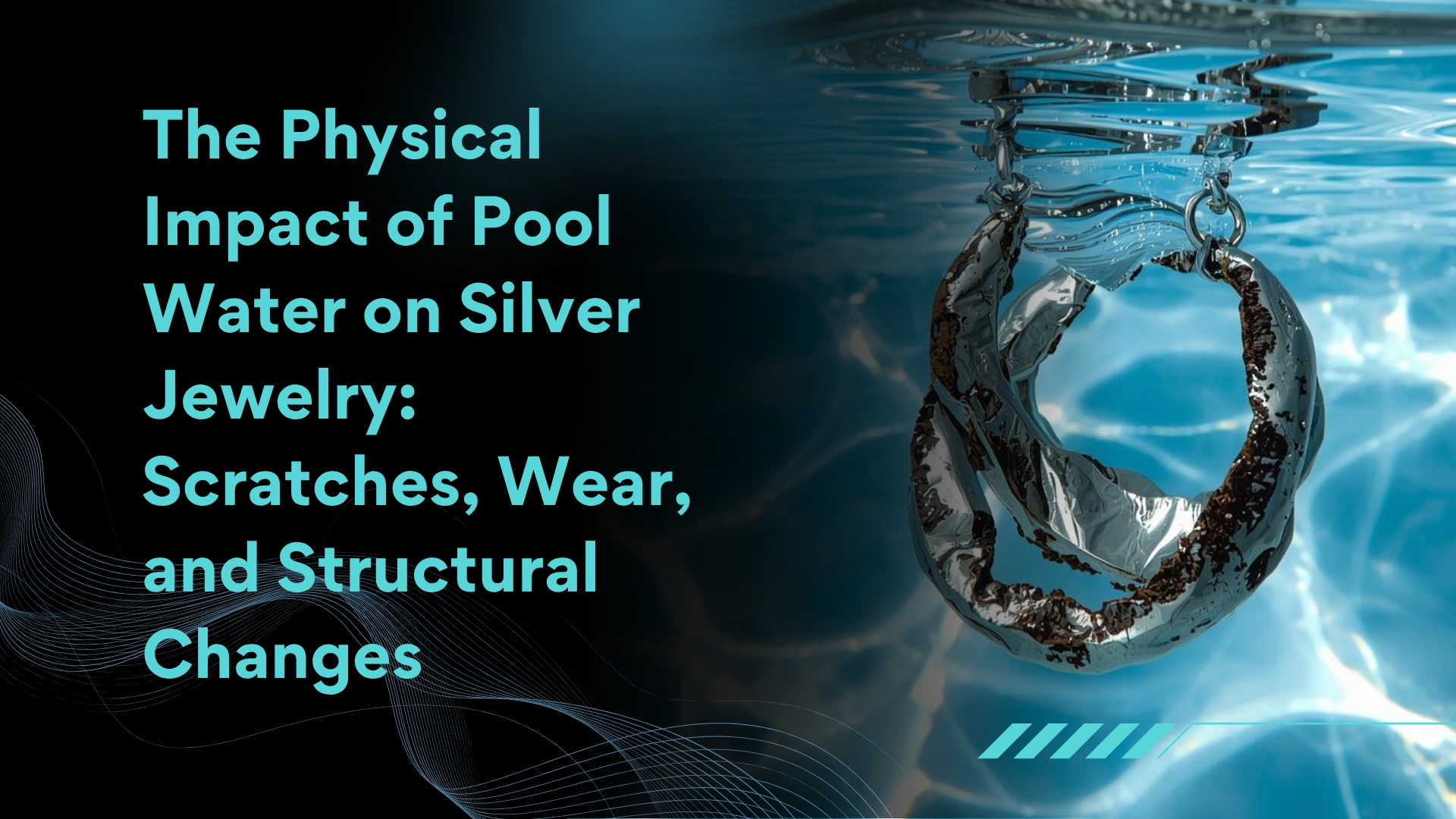Silver jewelry combines elegance and versatility, making it a favorite for everyday wear. However, this precious metal demands mindful care, especially around water. The physical impact of pool water on silver jewelry often goes unnoticed until visible damage appears — from subtle scratches to deeper wear. Understanding these effects helps preserve the brilliance and structure of your favorite silver pieces for years to come.
Many assume that occasional pool wear won’t harm their jewelry, but that’s far from the truth. The physical impact of pool water on silver jewelry begins the moment it meets treated water. Pool water contains chlorine, a powerful chemical used to kill bacteria, but one that also reacts aggressively with silver. When silver interacts with chlorine, its surface starts to weaken, dull, and sometimes discolor.
This reaction creates microscopic abrasions that, over time, lead to visible wear and texture changes. While the surface may initially appear fine, repeated exposure accelerates corrosion and weakens its natural luster..
The smooth surfaces of silver jewelry are highly sensitive to friction. In swimming pools, the combination of movement, chemical particles, and hard surfaces increases the risk of micro-scratches. The physical impact of pool water on silver jewelry often includes fine abrasions caused by pool tiles, rough edges, and accidental brushing against metal ladders or stone decks.
These small scratches not only affect shine but also make the jewelry more prone to tarnishing, as tiny crevices trap moisture and residues. The damage is gradual yet permanent without professional refinishing.
Repeated exposure to chlorine doesn’t just dull the surface — it can alter the metal’s integrity. Over time, the physical impact of pool water on silver jewelry leads to structural weakening. The chemical reaction between silver and chlorine forms silver chloride, a brittle compound that flattens the jewelry’s texture and reduces its flexibility.
Chains may snap more easily, clasps may loosen, and intricate filigree designs may lose definition. For handcrafted or fine silver jewelry, such damage can be irreversible and costly to repair.
Pool environments are not only chemically treated but also temperature-controlled, and these conditions amplify damage. Warm water accelerates chemical reactions, intensifying the physical impact of pool water on silver jewelry. Moreover, fluctuating pH levels — especially in improperly balanced pools — can further corrode the silver’s surface.
These combined elements gradually erode the metal’s polish, leaving it matte and rough. Even sterling silver, which contains copper for strength, suffers when copper oxidizes under chlorine exposure, causing the jewelry to darken or develop greenish tones.
The best protection against the physical impact of pool water on silver jewelry is prevention. Always remove your jewelry before swimming — whether in pools, hot tubs, or the ocean. If accidental exposure occurs, rinse the jewelry immediately with clean water and dry it thoroughly using a soft, lint-free cloth.
For existing damage, professional cleaning and polishing can restore shine and smoothness. Jewelers can also replate or refinish pieces to reinforce their surfaces. Regular maintenance helps prevent minor issues from turning into permanent damage.
Silver jewelry often carries personal stories — gifts, milestones, or symbols of connection. Protecting it means safeguarding those memories. Understanding the physical impact of pool water on silver jewelry empowers you to make informed choices about care and wear.
By avoiding chemical exposure, cleaning regularly, and storing pieces properly, you preserve both their physical beauty and emotional value. Because in the world of jewelry, true luxury lies in longevity — not just in the shine we see, but in the memories we keep.











